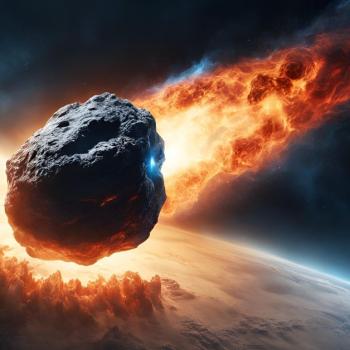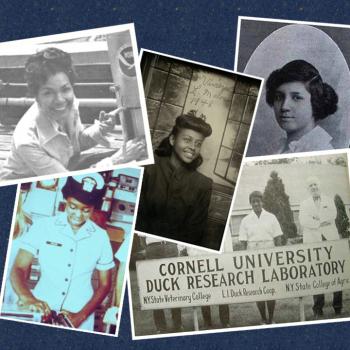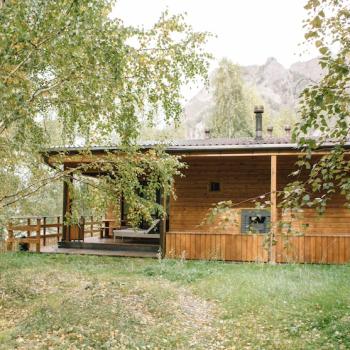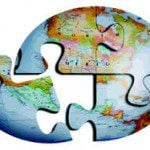For many Wiccans Yule is a lesser Sabot; Beltane and Samhain are more significant. Common celebrations involve all night bonfires, Yule log rituals, and rituals celebrating the return of the light with large numbers of candles. Drumming, chanting, and ecstatic dancing are often a part of these rituals, as they tend to be in all Wiccan and Neo-Pagan rituals. Many Norse Pagans on the other hand see Yule as the major festival, a time for swearing oaths, toasting, and boasting.
Solstice/Midwinter Night: Celebrated by many Neo-Pagans, New Agers, and even by some atheists we see new traditions are arising out of the old. They may borrow liberally from many older traditions and add to them with new traditions. It may be elaborate ritual or a simple bonfire to celebrate the returning sun. It may have religious or spiritual connotations or it may just be a cultural celebration. People are finding old and new ways to celebrate with friends and family.
Hanukkah (Chanukah): This eight-day festival of lights celebrates a victory by a small Jewish army, led by Judah Maccabee over the Assyrian Greeks in the 2nd century B.C.E. After regaining their right to worship in the temple, they had only enough sacred oil to last a short time. Myth has it that the oil miraculously burned for eight days straight. The festival is celebrated by lighting the menorah candles each night until all are lit. Gifts are exchanged and seasonal food shared. Gelt, which is chocolate or real money, is often given. A dreidel or four-sided top is also a popular gift and game to be played. Latkes or potato pancakes are often served.
Kwanzaa. This modern holiday was created in 1966 by Dr. Maulana Karenga, an American academic, to celebrate the African roots of Afro-Americans. The word is from Swahili and translated to ‘first fruits'. Seven candles, one black and three each of red and green, are lit each night for the seven principles of Kwanzaa. These principles are Unity, Self-determination, Collective work and Responsibility, Cooperative Economics, Purpose, Creativity, and Faith. Other symbols are the colors of red (struggle), black (unity), and green (future) from the flag created by Marcus Garvey at the beginning of the century, the unity cup, and the candleholder for the candles, which is called the Kinara.
Common Elements of Solstice Celebrations
Child of Wonder, Child of Light. A great many of the winter solstice festivals celebrate the birth of a wonder child. The child, especially a magical child, represents hope and rebirth embodied. The child is almost always a male and is often the result of a non-ordinary birth. The divine feminine is usually embodied in the birth and the Madonna/goddess image of fertility is often a part of the symbology.
Osiris, the Egyptian Sun god, underwent death, dismemberment, and resurrection yearly with the travels of the sun and the rise and fall of the Nile River and thus the fertility of the area. In his guise as Horus he was the sun as well as the son. Pictured sitting on the lap of his mother Isis, his portrait is very reminiscent of the Christian Madonna with child images and is one of the earliest children of promise.
In ancient Greek myth the son god Attis was born in a cave around the time of Solstice and was the son of the Goddess Cybel or Isis. Attis grew to full strength with the sun and was yearly cut down to be reborn.
While Saturn was the sun god for whom Saturnalia, the great Roman solar festival, was celebrated, another god Mithras was worshiped as well, both before Jesus (6th century B.C.E.) and after (2nd century B.C.E. to 5th century C.E.). Mithras was also born in a cave of a virgin and later went through death and resurrection. Because Mithras was worshiped by Emperor Constantine before his conversion to Christianity he may be a more direct influence on both the Christian story and the date since Mithras's birthday was celebrated on December 25.
Even in North America among the Huron along the northern shore of Lake Ontario, a child of wonder named Deganawidah was born of a virgin. This child was sent by the Great Spirit as a messenger to bring peace to humankind. He traveled among the tribes and is credited with founding the Iroquois Confederacy. It is believed that he too will return to Earth at the time of greatest need. This is a clear parallel to the return of King Arthur and the Second Coming of Christ and would indicate that the story is an archetypal myth shared by humans all around the world.
Santa and other Father Winters. Is Santa a Shamanic concept? Many pictures of northern Shaman are very similar to woodland Santas -- both ancient and modern. He appears in long fur robes, often with bells, and is often an older man. The Shaman works both in the spiritual realm and in the material sphere. The Shaman climbed the world tree to bring back gifts of spiritual knowledge as well as calling the herds to supply food and materials for the material lives of his people. Often he went up the smoke hole, the early chimney, at night, probably in a trance, possibly with the herd of reindeer that supported his clan.




